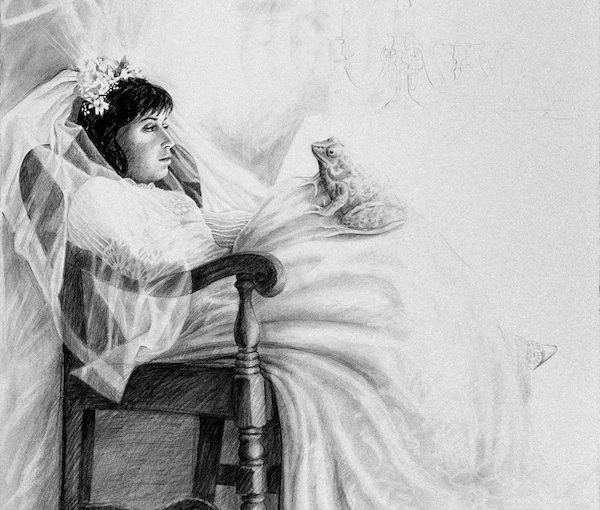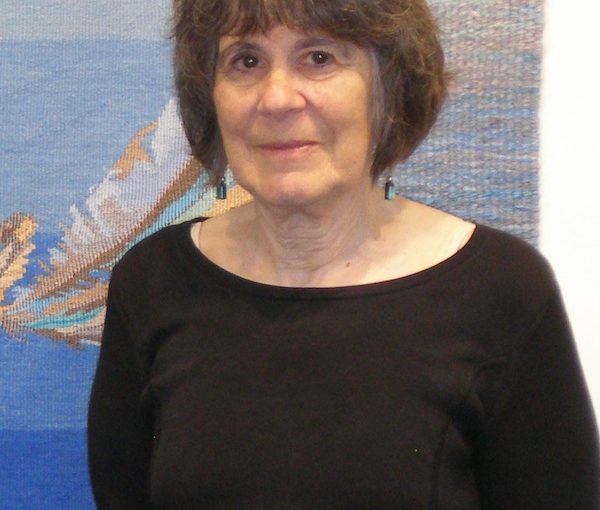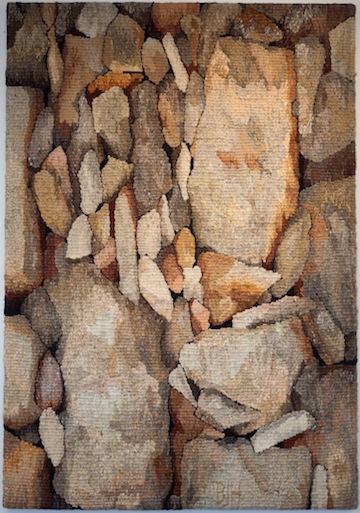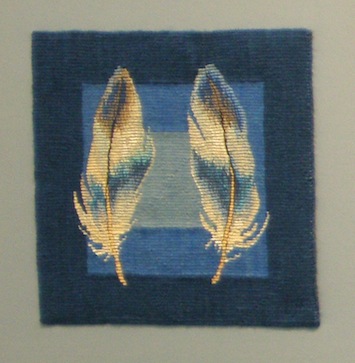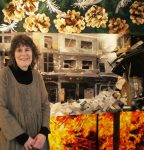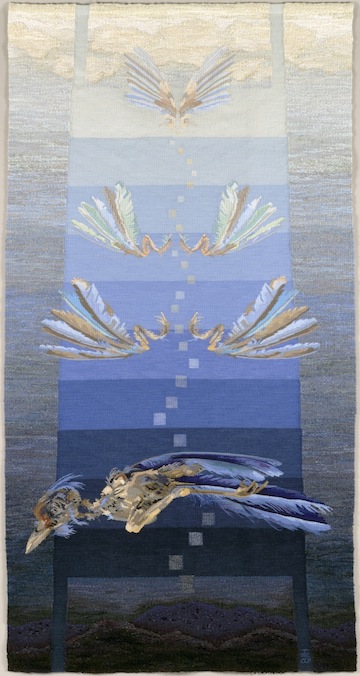“Kiss! Kiss! Kiss!” by Lilian Broca is part of the exhibit Brides: Portrait of a Marriage, which is at the Italian Cultural Centre’s Il Museo until Sept. 30.
In most romance novels and fairy tales, a love story ends in a wedding and the couple lives “happily ever after.” In real life, it’s not that simple. Marriage has its challenges.
The show Brides: Portrait of a Marriage, which opened at the Italian Cultural Centre’s Il Museo in Vancouver this summer, examines some of the aspects of marriage that fairy tales purposefully omit. The show incorporates the works of several local artists in different media: textile art by Linda Coe, photography by Grace Gordon-Collins, drawings by Jewish community member Lilian Broca and a tapestry by fellow Jewish community member Barbara Heller.
“I always wanted a show about brides,” Angela Clarke, curator and director of Il Museo, told the Independent. “We have weddings at the centre almost every week. There is so much energy, so many emotions. But the Roman goddess of marriage, Juno, was not a happy woman. Hers was not a happy marriage, and the controversy attracted me.”
Brides is part of the museum’s Gendered Voices series, and looks at marriage from a woman’s perspective.
“This exhibition places the institution of marriage under the looking glass,” said Clarke. “Each participating artist tackles the deep psychological complexity and immense social pressure involved in a traditional marriage. Historical perspectives and family dynamics, personal reflections and the impact of feminism are explored in the show.”
Each artist contributed her own personal outlook. Coe’s fabric panels belong to her Dirty Laundry series. Colourful and sophisticated-looking hangings were all created from fabric snatches that were once parts of women’s dowries, used and reused for several generations before they ended up in the artist’s stockpile.
“The eight fabric panels represent eight stages of a woman’s life,” explained Clarke. “Each one incorporates relevant texts from Renaissance romance novels and etiquette manuals. In the 16th century, such manuals were very popular in Italy, especially among the middle classes. They were written to instruct young brides in the proper comportment, in the ways to become a successful bride and mother.”
In addition, those eight panels reference the eight requisite parts of a romance novel, from the Middle Ages to the modern Avon romances. “Those stages have names, the same names as the panels,” Clarke said. “No. 1, Stasis (infant). No. 2, Trigger (young girl). No. 3, Quest (betrothal). No. 4, Surprise (courtesan). No. 5, Critical Choice (bride). No. 6, Climax (wife). No. 7, Reversal (matron). No. 8, Resolution (widow). Every love story published these days must follow this structure.”
Heller’s tapestry and Gordon-Collins’s photographs explore wedding dresses and the commodification of weddings. The tapestry shows a bride in a beautiful dress, but her face is blurry, unimportant, and the dress becomes the focal point, a uniform, a symbol.
The photos, in the photogram or X-ray style, lack faces altogether, only the wedding attires of four generations of women of the artist’s family can be seen.
“Grandmother’s wedding tunic was modest, especially in comparison to the artist’s daughter’s wedding dress, much more opulent and sensual, and designed for one-time use only,” said Clarke. “Here, we can trace how, through the generations, the weddings grow into an industry, and the wedding accessories become commodities.”
While neon-bright colours dominate Gordon-Collins’s images and Coe’s collages shimmer with the patina of gold, Broca’s contribution to the show is a sequence of stark black and white lithographs, all from her Brides series.
“My mother passed away in 1989,” Broca said, as she explained the roots of her series. “I was devastated by her death, although it was a blessing after suffering for years from cancer. Soon after her passing, I started dreaming about her as a young bride. I decided to draw my dreams.”
Her drawings reflect the dichotomy between the happily-ever-after concept and the fact that most marriages in the past were arranged, and not unions of love.
One of the drawings, “Kiss! Kiss! Kiss!” depicts a bride sitting in a chair, regarding a frog in her lap. A few more frogs – potential princes? – wait at her feet, expecting her to choose between them.
“I knew my bride would not kiss that frog,” said Broca. “So I added several other potential grooms. Some small, others big…. Still, I had a feeling she would resist them all.”
The work “Upon Reflection” is even more powerful. It shows a bride in a gown and veil looking into a full-length mirror. The image in the mirror depicts the bride, face and posture serene, as befits the occasion, but Broca has left the image of the bride herself white and, from within it, there is the drawing of a woman, the bride, trying to escape.
“That woman, upon reflection, discovers how much she doesn’t wish to be married, to be tied down. What happens next is up to the viewer’s imagination,” said the artist.
For Broca, black and white was the only possibility for the series. “It was the most appropriate way to describe what I felt…. After the first two or three drawings, I began to realize that many brides were not happy at the altar – I showed them. Only a very few happy brides appear in my drawings. Not because happy brides are a minority, but because happy brides are difficult to portray without slipping into a less-than-powerful mode. I may be wrong, I may be able to do it today, but, at that time, it didn’t seem possible.”
Clarke knew about Broca’s series and wanted to include it in its entirety in the show, but that wasn’t possible. “We couldn’t include so many that Angela wanted because they had been sold,” said Broca. “We couldn’t borrow them. The owners live in the U.S. and Eastern Canada. As it is, the two works in the exhibition were borrowed from local owners.”
Brides is at the Italian Cultural Centre until Sept. 30.
Olga Livshin is a Vancouver freelance writer. She can be reached at [email protected].

